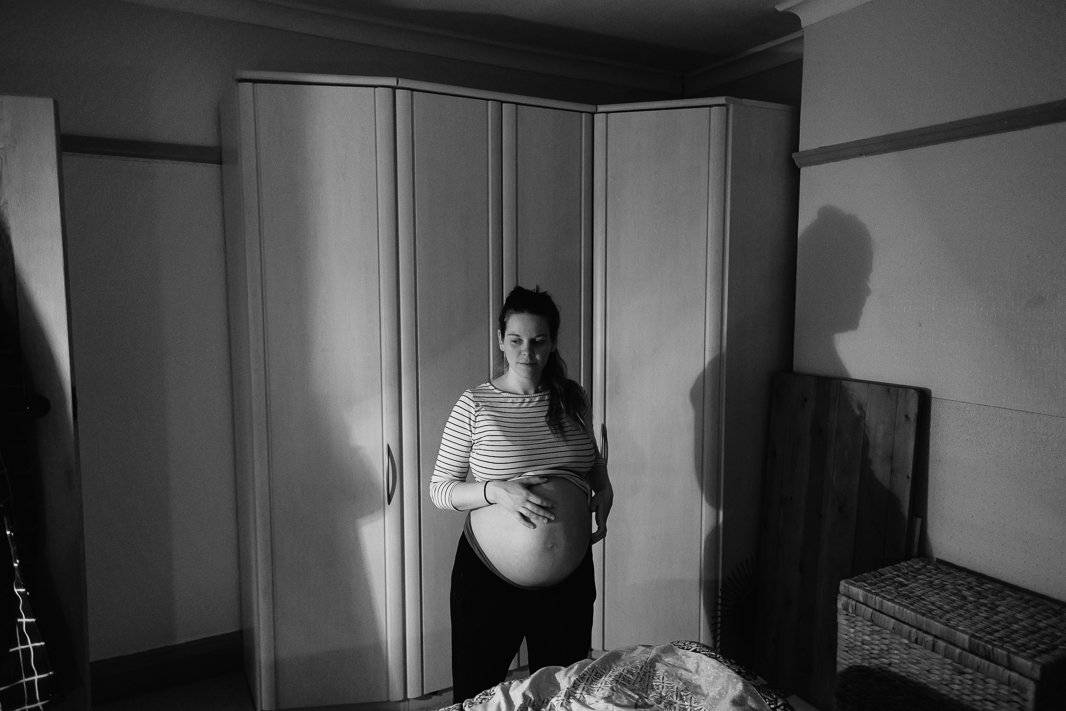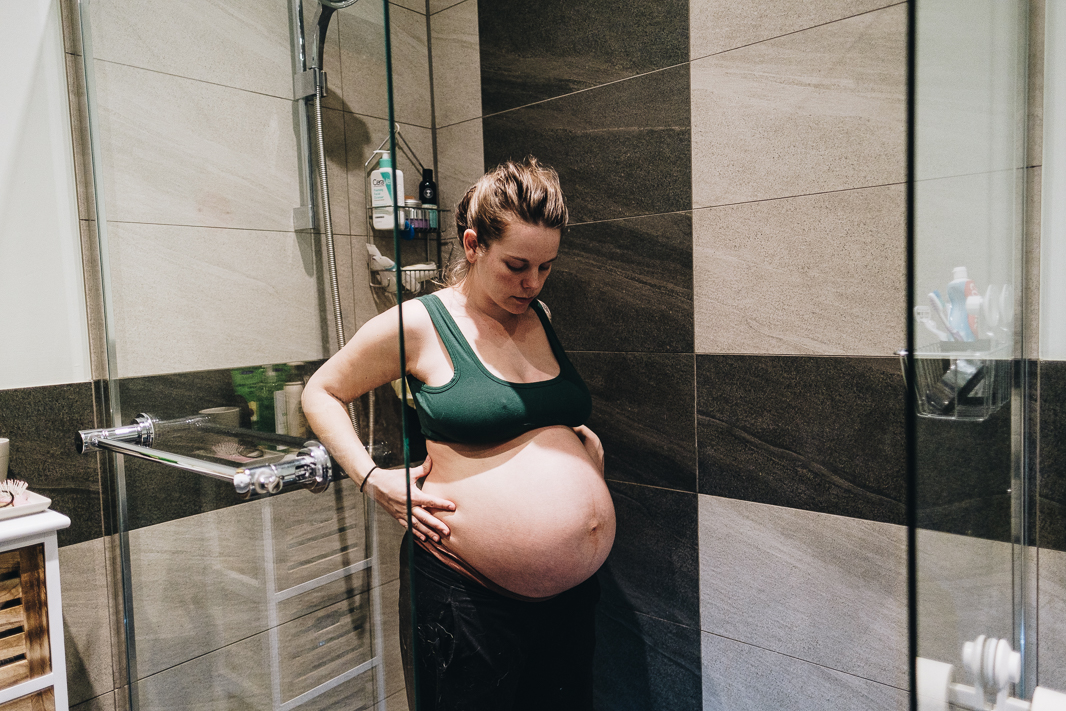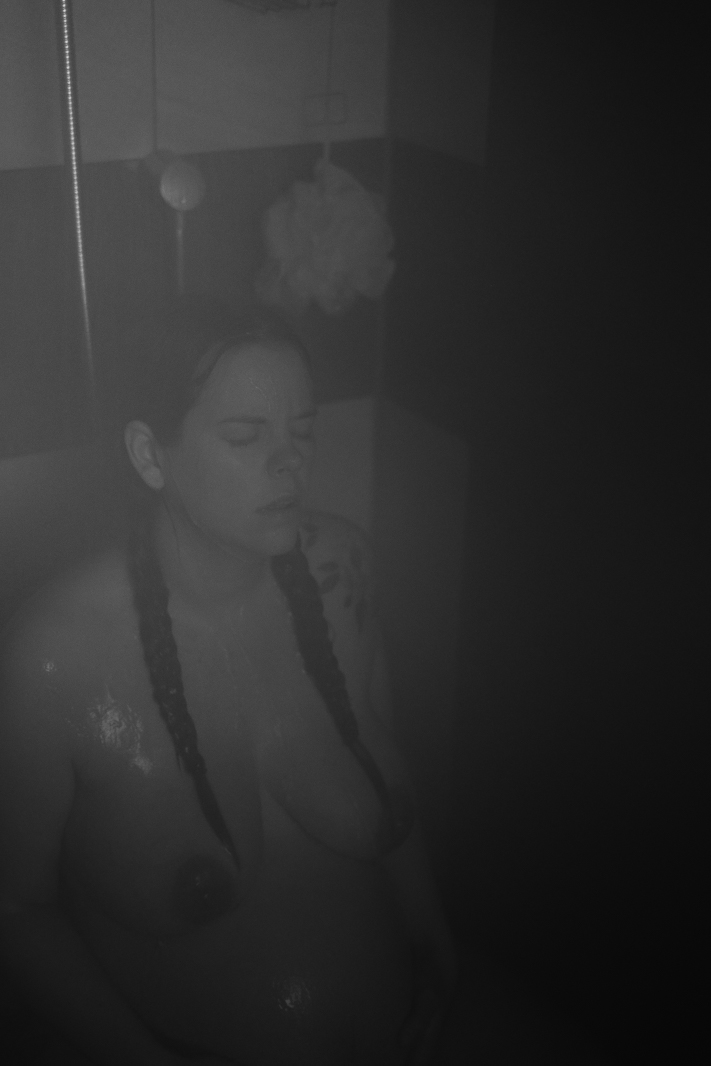Knowing how to photograph your birth can be incredibly valuable and rewarding. My partner and I photographed my own birth and I treasure those images so much. We were not in a position to hire a photographer due to COVID-19 restrictions and the fact that the UK was still in a lockdown. I knew I wanted birth photos, so I had to be a bit creative to photograph my own. Here’s how I photographed my birth:
Find Birth Photos You Like
Depending on the type of birth you plan on having, find images in those settings that you like. Particularly focus on the angles and perhaps even the action happening. Whatever birth you plan on having, however, make sure you also look at images of other types of births. Anything can happen in birth and nothing is predictable.
You may be planning a home birth, but end up transferring to hospital (like me). Or you might be planning a birth in the birth centre but have a c-section instead.
Keep your mind open to the different possibilities and look at lots of birth photos.
Once you’ve saved some you particularly like, put a collage of them together and print them out. These will serve as easy reminders during your birth of what images you ideally wanted to capture.
Remember: we’re not aiming to duplicate these images as each birth is unique, but they serve as a starting off point and a reminder of what you might like.
Practice Taking Your Birth Photos at Night
No, you don’t need to practice your birth poses here, but you can if you want. What we want to do before our birth is practice taking your birth photos in different lighting conditions.
Most spontaneous births take place between 1am and 7am, with a peak around 4am according to a study by researchers from the University of London. This means that it would be incredibly useful to practice taking photos at night when it’s dark.
Photographing at night is a completely different ball game from photographing in the day. All good photography stems from a good understanding of light and how to manipulate light.
Moreover, many birthing people prefer to give birth in darker environments. So, even if you’re actively labouring during the day, you may prefer the curtains drawn tight at home or the lights dimmed low in a birth centre or, if possible, the lights minimised in a hospital room.
Before the birth of my son, I handed my camera over to my partner to take some practice photos of me in different rooms of our house (as I was planning a home birth) when it was dark out. Here are some of those practice photos:

The light source for the above photo is the bedside lamp. Half of my body is cast in shadow (which can look really lovely for more close up shots) and a harsh shadow cast is on the wall. I asked my partner to move so that he was pointing the camera in the same direction as the light to minimise some of those harsher shadows. Now we have the below image:

The light is spread more evenly over my body, which provides better clarity but we do lose a sense of that moody atmosphere.

We also practiced taking photos in the shower as I knew that was going to be one of my methods of pain relief at home. We tried to take a photo with the lights out at first, but it was pure darkness. The lighting isn’t the greatest in our bathroom and it’s difficult to manoeuvre as you’re stuck in one place dependant on where your shower is located. As a professional birth photographer, I ask clients in our pre-booking questionnaire for permission to use flash in this situation, but I knew I didn’t want to add that extra layer of complexity for my partner.
One last note about shower photos: practice taking the photo with the shower actually on. I like my showers super hot and steamy and that will affect the camera and lens as shown below. We didn’t practice it, I forgot about it, and my partner did her best (which was pretty good) when I was actually in labour.

If you’re not planning a home birth, it can be trickier to practice taking your photos in the same environment, but it’s still worthwhile having a go at home. You’ll still need a basic understanding of how to use your camera in low light situations.
Practice Different Angles
Okay, here’s where you might want to practice your birth poses. If your partner is anything like my partner, they’ll take the camera, point it at you from the height they are standing and think that’s a good job done.
Encourage your partner or someone on your birthing team to get down low or shoot from higher up. Shoot from a variety of different angles and you’ll get more unique and interesting photos.
When my partner and I were taking our practice photos, I would actually take her picture first to show her the angle I was thinking about and then have her try. We actually do this all the time. My partner often goes location scouting with me and I will have her stand in places I’m thinking about shooting my client.
The most important thing to remember
The most important thing to remember when photographing your own birth is that you are actually giving birth. Nothing is more important than that. Not even getting the photo. You may have it in your head that you want your partner to take all of these photos, but your birth partner is an integral part of your birthing experience also.
During my birth, there were times I would tell my partner, “forget the camera, I need you right here to hold my hand.”
At different stages my partner would ask me: “would you like me to take a photo or be here for you.” My answer changed depending on how I was feeling in that moment.
I also had grand plans to set up a tripod at home and give my partner the remote shutter release so that she could be in the photos, and we practiced it, but an emergency transfer to the hospital, and frankly…a feeling of “I couldn’t give a fuck” during labour means I have no photos of my partner’s participation and support during my birthing experience.
This is the biggest reason I think it’s so important to hire someone to photograph your birth (and I would have if it weren’t for COVID lockdown restrictions). Having a professional photographer come in and document this journey means that all of those involved in the journey such as the partner(s) supporting you, are included within the imagery. I don’t have that and wish I did.
If you need more tips for photographing your birth, pop a comment below.

0 Comments
Trackbacks/Pingbacks